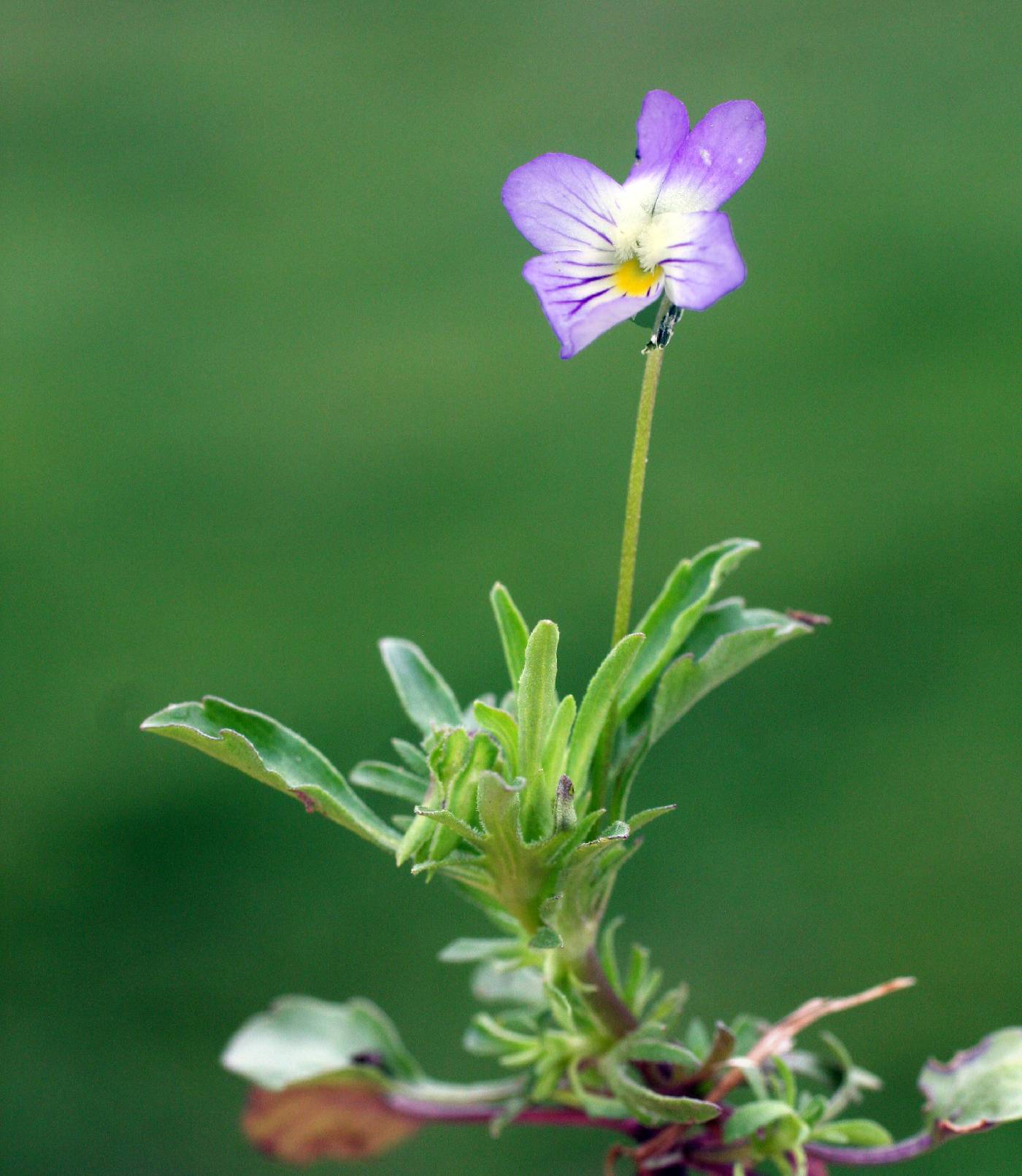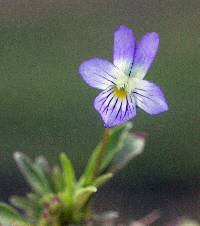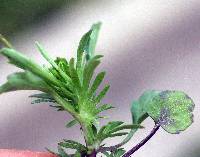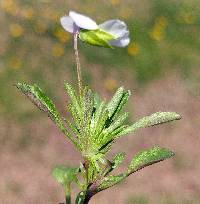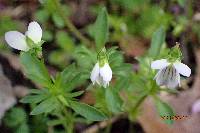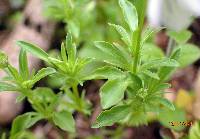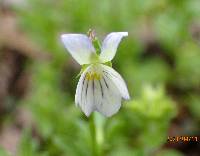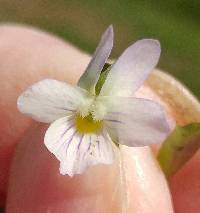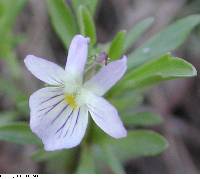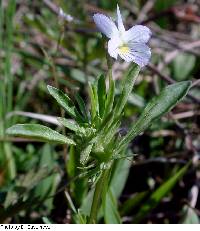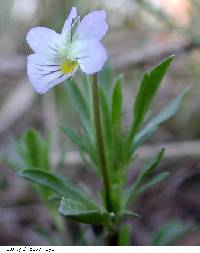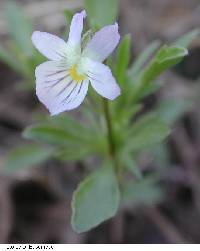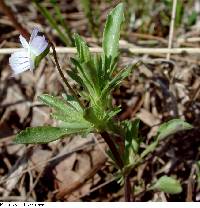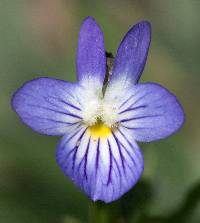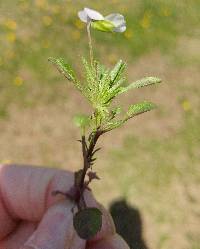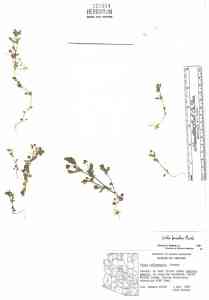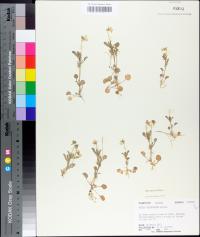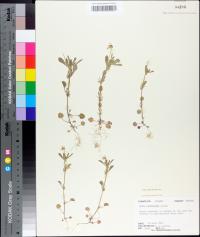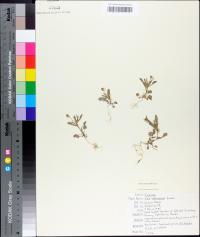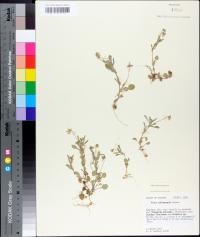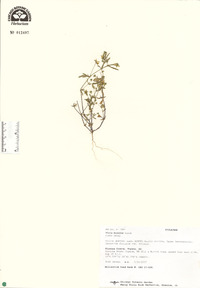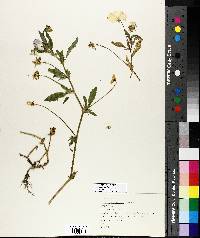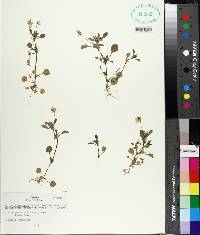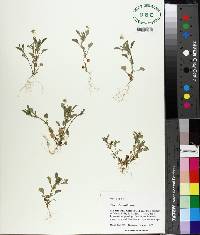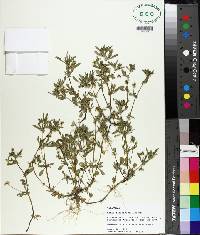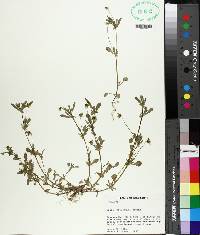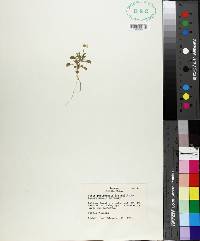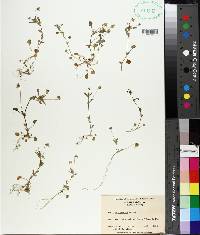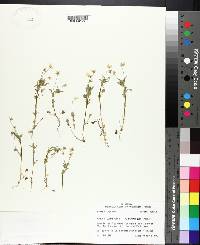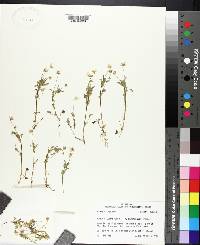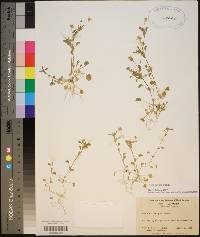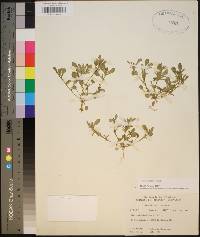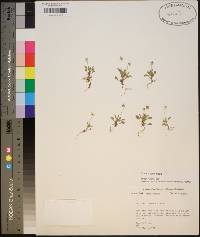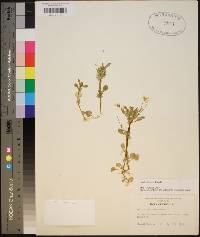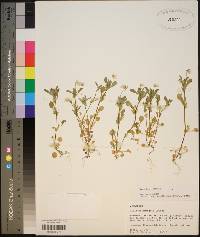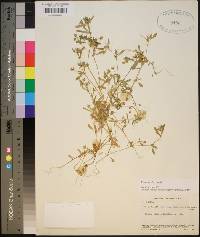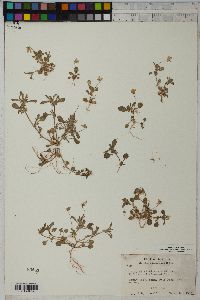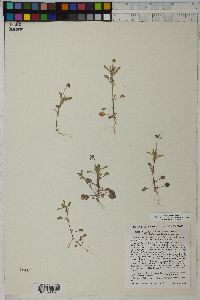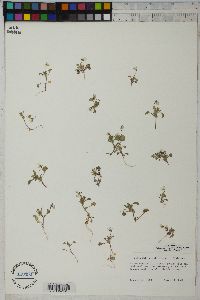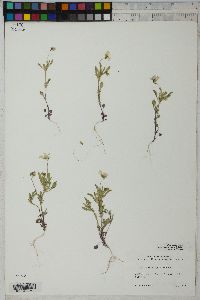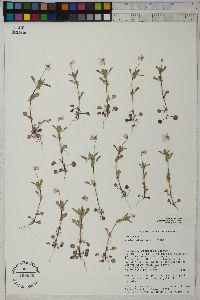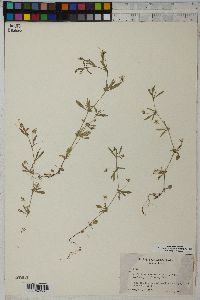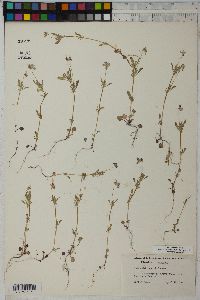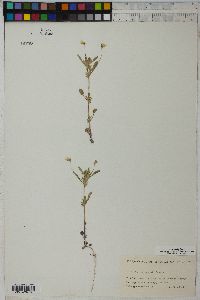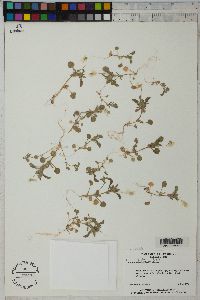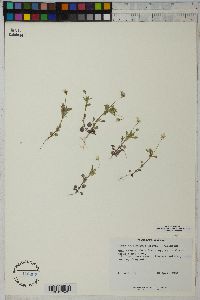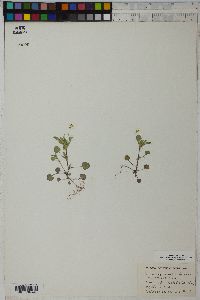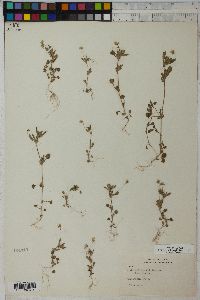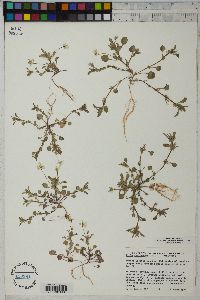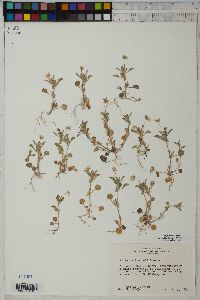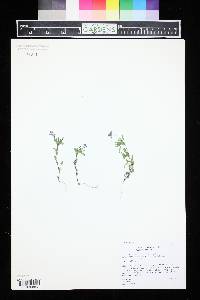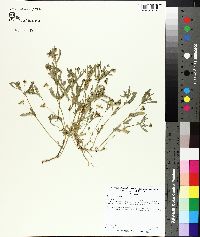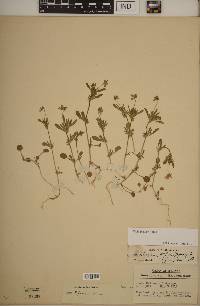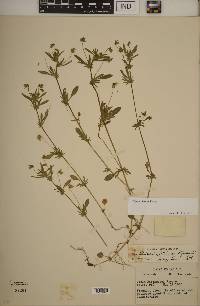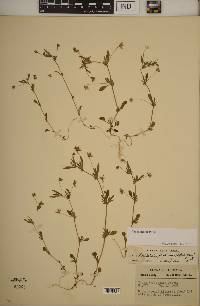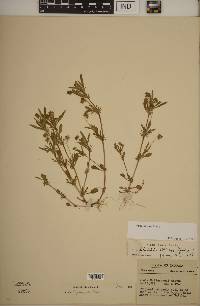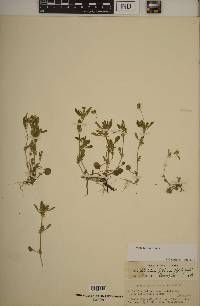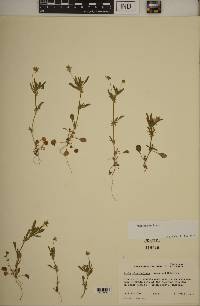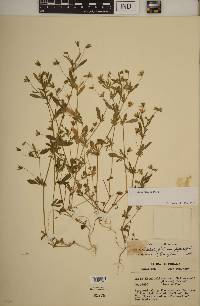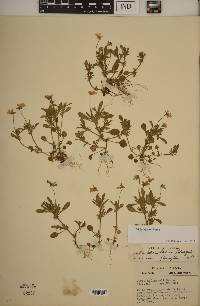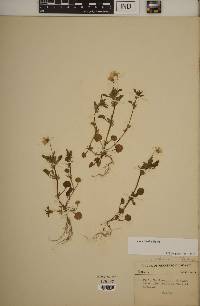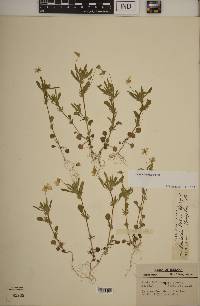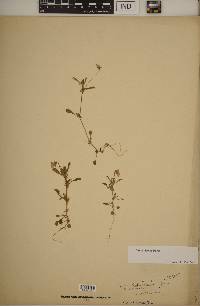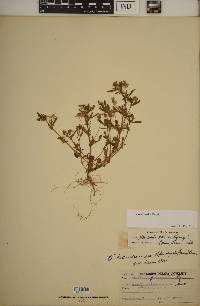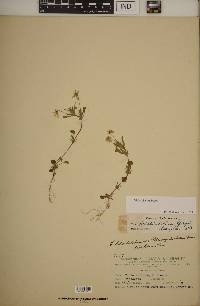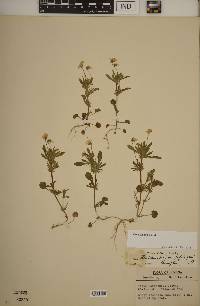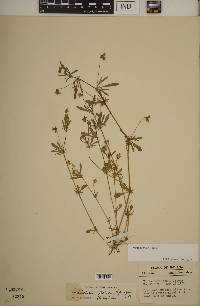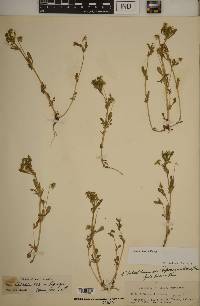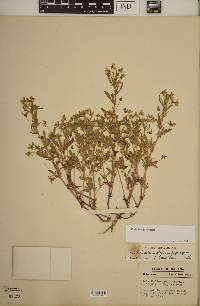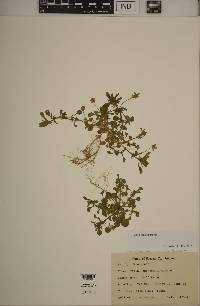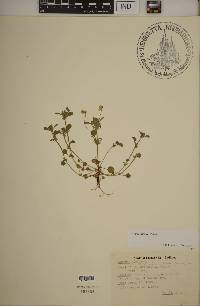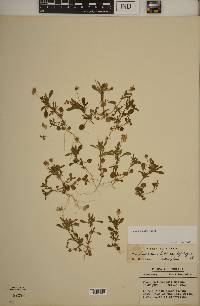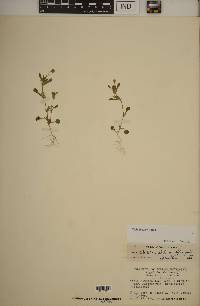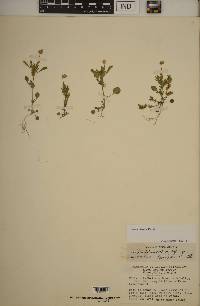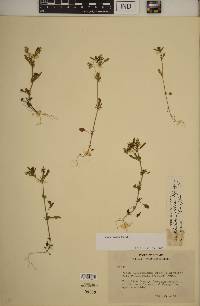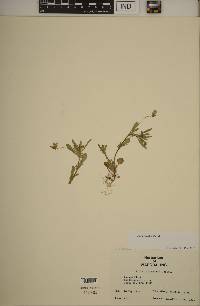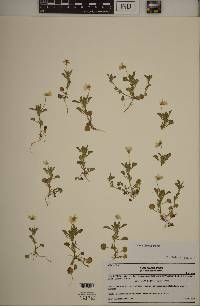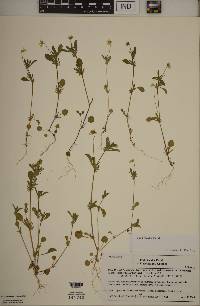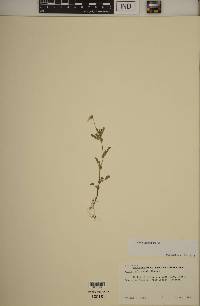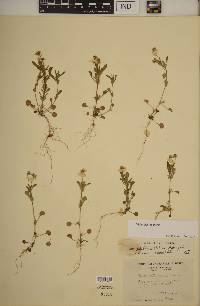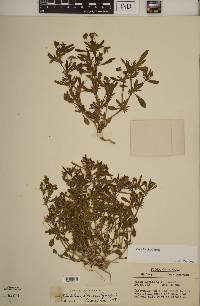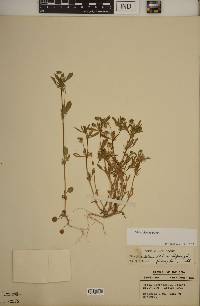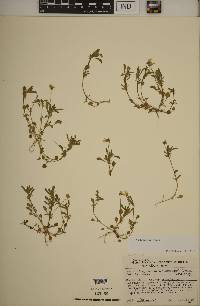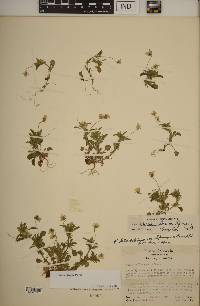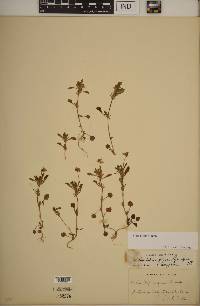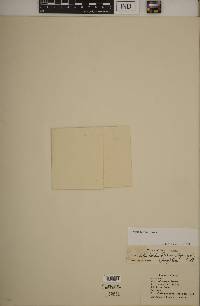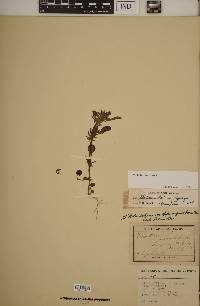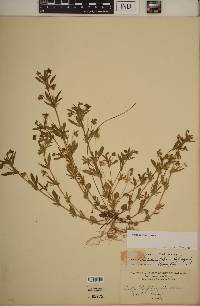Viola bicolor
|
|
|
|
Family: Violaceae
Field Pansy
[Viola kitaibeliana Roem. & Schult., moreViola kitaibeliana var. rafinesquei (Greene) Fern., Viola kitaibeliana var. rafinesquii (Greene) Fernald, Viola rafinesquei Greene, Viola rafinesquii Greene] |
PLANT: Annuals 2.5 25 cm tall. STEMS: erect, often much branched from the base, glabrous or short strigose on the angles or surface. LEAVES: simple, cauline, alternate, glabrous to sparsely pubescent; stipules 8 22 mm long, palmately lobed, the middle lobe leaf like, oblanceolate to elongate, spatulate, the lower lobes shorter, dissected, the margins usually ciliate; petioles 3 20 mm long; lower blades 4 14 mm long, orbicular to ovate, the margins entire to irregularly notched; upper blades 11 30 mm long, 3 13 mm wide, spatulate to obovate, or broadly elliptic, seldom lanceolate, the margins nearly entire to notched. INFLORESCENCE: axillary, the pedicels to 6.3 cm long. FLOWERS: sepals to 7 mm long, with 1 2 mm long ear like lobes at the base; petals much longer than sepals, bluish white or blue, the lowest petal (including spur) 7 13 mm long; cleistogamous flowers present. FRUITS: 4-7 mm long, glabrous. 2n = 34. NOTES: Woodlands, fields, roadsides: Gila, Pima, Pinal cos.; 1200 1600 m (4000 5200 ft); Mar May; CO, KS, MI, MO, NE, NY, s to GA, NM, OK, SC, TX. Often confused with V. arvensis. REFERENCES: Little, R. John. 2001. Violaceae. J. Ariz. - Nev. Acad. Sci. Volume 33(1). Annual herb 5 - 35 cm tall Stem: erect, slender, unbranched or branched from base, mostly hairless, and producing both leaves and flowers. Leaves: alternate to almost opposite, stalked, hairy or almost hairless, shallowly round-toothed, and small (0.5 - 2.5 cm long). All the leaves have tapering bases, but otherwise are variable in shape with the lowest leaves being rounded, while the upper leaves are more narrow oblong to spoon-shaped, and often non-toothed. Stipules large, almost leafy, deeply lobed near base into many slender segments and one large terminal segment . Flowers: in upper leaf axils, long-stalked, pale blue with yellow center, small (0.7 - 1 cm long and scarcely 1 cm wide), bilaterally symmetric with two upper petals, two lateral petals, and lower petal with base modified into a rounded nectar spur. In the summer, producing very fertile flowers that do not open (cleistogamous). Sepals: five, green, about 5 mm long, bristly hairy on edges, lance-shaped with ear-like appendages (auricles) at the base. Petals: five, separate, all differently shaped, pale bluish to creamy and lighter near base, about two times longer than sepals. The lowest petal is prolonged at its base into a short, rounded spur or sac. Stamens: five, separate, but very tightly arranged so anthers touch as they surround ovary. The filaments are very short, and the lower two stamens have spur-like nectaries on their backs that extend into the spur or sac of the lower petal. Fruit: a many-seeded, 4 - 6 mm long, oblong to ellipsoid or globular capsule that opens lengthwise from top. The seeds are pale brown and have a large amount of oily endosperm, and often an appendage (aril). Pistils: with a single-chambered, superior ovary; a single style that greatly enlarges near the tip; and a globose, hollow stigma with a wide opening on the lower side. Similar species: Viola rafinesquii is probably most similar to the also small-flowered V. arvensis, but that species has sepals that are longer than the lateral petals, and the flower is pale cream. Also similar is V. tricolor, but that species has longer flowers (over 1.5 cm), and the upper pair of petals are dark blue or purple from the middle to the tips. Flowering: April to May Habitat and ecology: Infrequent, mostly in the southern part of the Chicago Region in disturbed sandy soil. Occurence in the Chicago region: non-native Notes: The bruised roots of V. rafinesquii have a smell of wintergreen. This Eurasian species was introduced from further south in the United States. It has also been known by the name Viola bicolor. Etymology: Viola is the classical name for the genus. Rafinesquii is named after Constantine Samuel Rafinesque-Schmaltz, a 19th Century botanist and naturalist. Author: The Field Museum JANAS 33(1), Kearney and Peebles 1969 Duration: Annual Nativity: Native Lifeform: Forb/Herb General: Perennial, low-growing herb, to 30 cm tall, stems branching, with lyrate-pinnatifid stipules nearly as long as the leaf blades, herbage pubescent, arising in clusters from branching rhizomes. Leaves: Round-ovate, simple, basal, and cauline, with crenate margins, tip obtuse, base cordate to truncate, leaves to 4 cm long, borne on petioles to 7 cm long. Flowers: Pale blue to white, the lower 3 with conspicuous longitudinal purple veins, white a tuft of white hairs at the base of the petals, with the bottom petal bearing an elongated spur, flowers axillary or borne on pedicels to 10 cm long. Fruits: Glabrous fruits to 11 mm long. Seeds ovoid, many, with a prominent caruncle. Ecology: Found from 4,000 ft and below (1219 m). Notes: Look for this species under Viola rafinesquii. May be introduced. Look to the remarkable lyrate stipules as a good identifier for this species. Synonyms: Viola rafinesquii, V. kitaibeliana var. rafinesquii Editor: LCrumbacher, 2011 Slender, glabrous or subglabrous annual 5-40 cm, often branched from the base, the internodes usually exceeding the lvs; lvs almost entire, variable in shape, the lower ±orbicular, the upper spatulate to broadly oblanceolate; stipules conspicuous, foliaceous, often ciliate, pectinately cut, the middle lobe elongate-spatulate and entire or nearly so; fls long-peduncled, the early ones generally chasmogamous; sep ciliate, half as long as the deep blue or bluish-white to cream- colored ("ivory") pet, these ca 1 cm or nearly 1 cm; style much enlarged above, with a globose, hollow tip and a wide orifice on the lower side; mid- and late-season (rarely all) fls cleistogamous, with small or no pet; frs oblong-ellipsoid, 4-6 mm; seeds pale brown; 2n=34. Fields, open woods, roadsides, and grassy places; Mass. and N.Y. to Nebr. and Colo., s. to S.C., Ga., and Tex. (V. kitaibeliana var. rafinesquii) Gleason, Henry A. & Cronquist, Arthur J. 1991. Manual of vascular plants of northeastern United States and adjacent Canada. lxxv + 910 pp. ©The New York Botanical Garden. All rights reserved. Used by permission. From Flora of Indiana (1940) by Charles C. Deam Infrequent but fast becoming more widely scattered. Most abundant in sandy soil or in sandy clay soil in woodland, fallow, and cultivated fields and along roadsides. There are no reports for it north of Tippecanoe County, although it occurs in Michigan. …… Indiana Coefficient of Conservatism: C = null, non-native Wetland Indicator Status: FACU Diagnotic Traits: plants with aerial stems; stipules fringed with several linear segments on each side, the terminal lobe similar to the lateral ones; corolla pale blue, occasionally light blue or nearly white, with yellow throat; petals longer than the sepals. |
|
|
|

